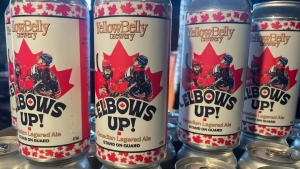4
These are difficult stories. We bear witness in this chapter to the role of sport in furthering the settler colonial projects throughout Turtle Island. Here are some supports to access in the community and from a distance:
First Peoples House of Learning Cultural Support & Counselling
Niijkiwendidaa Anishnaabekwag Services Circle (Counselling & Healing Services for Indigenous Women & their Families) – 1-800-663-2696
Nogojiwanong Friendship Centre (705) 775-0387
Peterborough Community Counselling Resource Centre: (705) 742-4258
Hope for Wellness – Indigenous help line (online chat also available) – 1-855-242-3310
LGBT Youthline: askus@youthline.ca or text (647)694-4275
National Indian Residential School Crisis Line – 1-866-925-4419
Talk4Healing (a culturally-grounded helpline for Indigenous women):1-855-5544-HEAL
Section One: History
A) The Residential School System
Exercise 1: Notebook Prompt
We are asked to honour these stories with open hearts and open minds.
Which part of the chapter stood out to you? What were your feelings as you read it? (50 words)
| Something that stood out to me was that girls were assigned bells only if they were of a smaller size, girls classified as large in size were tasked with the physical activity of club-swinging. It saddened me to learn about yet another example of discriminatory behavior exhibited in residential schools.
|
B) Keywords
Exercise 2: Notebook Prompt
Briefly define (point form is fine) one of the keywords in the padlet (may be one that you added yourself).
| The Indian act was passed as law by the Canadian federal government in 1876. The law was implemented to control the Indigenous population in the country. The Indian Act also dictated the terms of the relationship between the federal government and Indigenous peoples.
|
C) Settler Colonialism
Exercise 3: Complete the Activities
Exercise 4: Notebook Prompt
Although we have discussed in this module how the colonial project sought to suppress Indigenous cultures, it is important to note that it also appropriates and adapts Indigenous cultures and “body movement practices” (75) as part of a larger endeavour to “make settlers Indigenous” (75).
What does this look like? (write 2 or 3 sentences)
| The appropriation and adaptation of Indigenous cultures and “body movement practices” aims to include Indigenous identities in sport. This is done by first recognizing the ways Indigenous people have been excluded from sport in the past. There is a need for a decolonized approach to sport to create an inclusive sporting world. |
D) The Colonial Archive
Exercise 5: Complete the Activities
Section Two: Reconciliation
A) Reconciliation?
Exercise 6: Activity and Notebook Prompt
Visit the story called “The Skate” for an in-depth exploration of sport in the residential school system. At the bottom of the page you will see four questions to which you may respond by tweet, facebook message, or email:
How much freedom did you have to play as a child?
What values do we learn from different sports and games?
When residential staff took photos, what impression did they try to create?
Answer one of these questions (drawing on what you have learned in section one of this module or prior reading) and record it in your Notebook.
| Sports and games teach values about determination, sportsmanship, fairness, cooperation and so much more. They present a common goal between players, winning, and in doing so players are encouraged to try their hardest and work together with team mates. Players learn to play according to the set rules for the game, and are encouraged to handle both winning and losing with grace. This sense of fairness and sportsmanship increases the likelihood of making connections in these sports and games settings.
|
B) Redefining Sport
B) Sport as Medicine
Exercise 7: Notebook Prompt
Make note of the many ways sport is considered medicine by the people interviewed in this video.
| Aidan Baker considers his sport, lacrosse, his medicine. The sport has been valued in his family for decades and gave him an outlet for stressors. Chief Robert Joseph, a survivor of residential schools, explains that sports provided happy memories in the midst of the abuse happening in the residential school. Sports are therapy, they provide something fun that is completely separate from trauma and stress. Tauri Treadwell plays a variety of sports, she acknowledges that without her ancestors she wouldn’t have had the opportunities in sport she has, she refers to sports in general as a release.
|
C) Sport For development
Exercise 7: Notebook Prompt
What does Waneek Horn-Miller mean when she says that the government is “trying but still approaching Indigenous sport development in a very colonial way”?
| Waneek Horn-Miller describes her bittersweet experience as a Mohawk woman competing for team Canada in the Olympics. This quote connects to this by explaining that despite efforts by the government Indigenous peoples still face unnecessary challenges in sport. The system for inclusion of Indigenous peoples in Olympic sport is practically non-existent. The approach to Indigenous sports development continues to lack in access and appreciation for Indigenous athletes. |
Exercise 8: Padlet Prompt
Add an image or brief comment reflecting some of “binding cultural symbols that constitute Canadian hockey discourse in Canada.” Record your responses in your Notebook as well.
|
This beer can incorporates language to link hockey to Canada by quoting the Canadian national anthem in reference to the hockey term “elbows up.” The image on the can includes a large red maple leaf in the background to represent Canada, as well as many smaller maple leafs surrounding the can. Canada and hockey symbols are often presented together as one, in this example the intent is to advertise a product. In Canada hockey is the most widely valued sport, and this almost creates a culture surrounding the sport.
|
Section Three: Decolonization
Please see the major assignment for this half of the term in the final section of this chapter.


